Is Ironclad the Right AI Contract Management Platform for You?
This Quick Quiz Reveals the Answer!
Introduction to Ironclad: Revolutionizing Contract Lifecycle Management
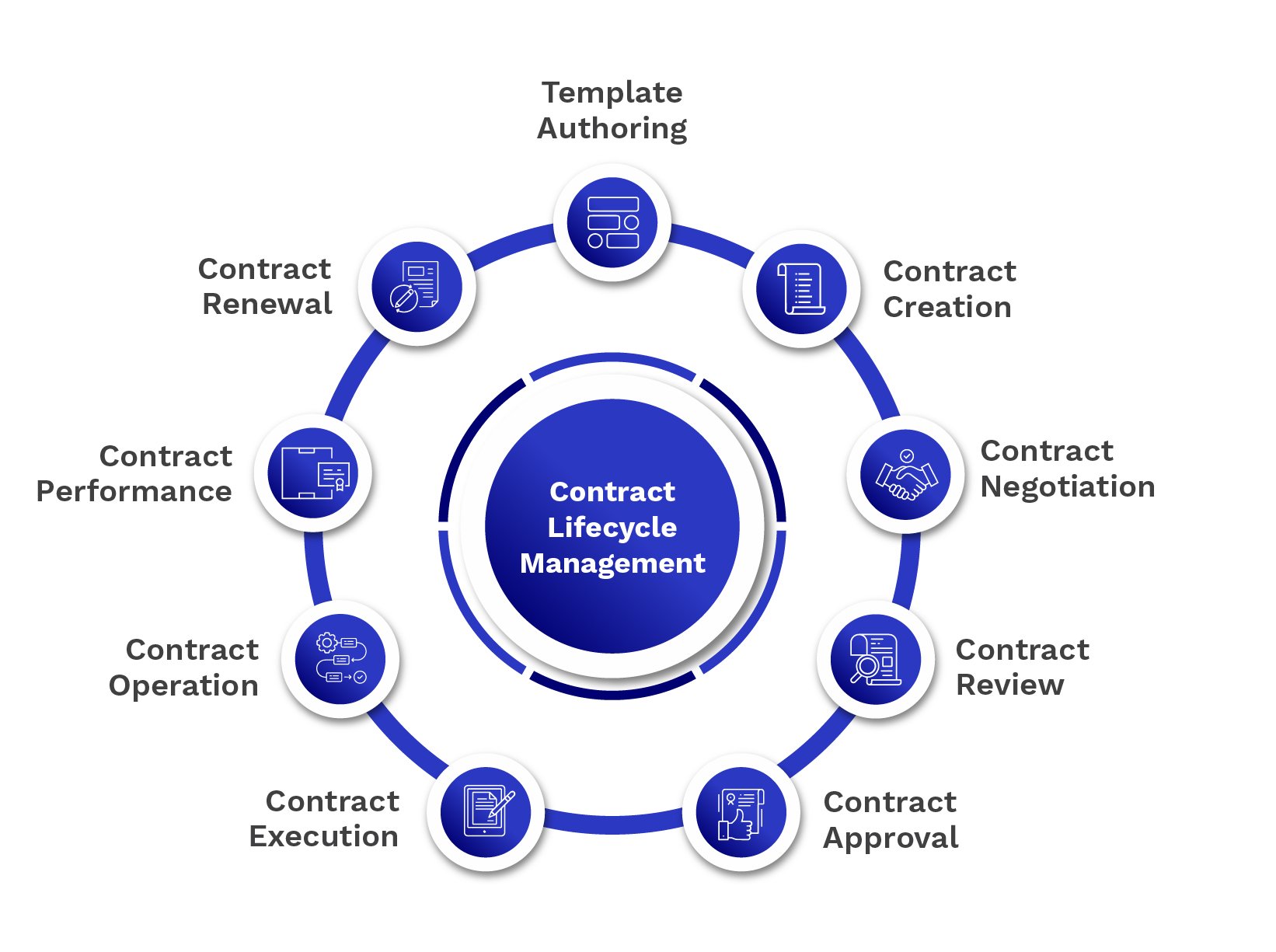
Let's be honest—for most businesses, the contracting process is a mess. It's a chaotic mix of Word docs flying around in emails, endless back-and-forth with Legal, and a nagging fear that a key renewal date is buried in a forgotten PDF somewhere. This is the exact headache that a tool like Ironclad, a top-tier Digital Contracting Platform, is built to solve.
Ironclad is designed to take that chaos and put it on a smart, automated assembly line. It handles the full contract lifecycle—from creation to final storage—while connecting your Legal, Sales, and Procurement teams on one unified platform. You can find more reviews like this in our AI Tools For Contracts and Legal category on our main site, Best AI Tools For Finance. With its intuitive interface and robust analytics capabilities, Ironclad streamlines contract management, allowing for easier tracking and compliance. Users often seek clarity on its functionalities, which is why the ‘Ironclad FAQs‘ section is an invaluable resource for understanding best practices and troubleshooting common issues. By leveraging Ironclad, organizations can enhance collaboration and drive efficiency throughout their contract workflows. With Ironclad, teams can streamline their contract negotiations, reduce turnaround times, and minimize errors, all while maintaining compliance and ensuring transparency. For those looking to maximize their use of the platform, exploring the Ironclad Tutorials and Usecase will provide valuable insights and practical applications. This fosters a deeper understanding of the tool’s capabilities, empowering users to leverage it to its fullest potential.
In this deep dive, we're going to tear it down and see if it lives up to the hype. I'll explore Ironclad's AI capabilities, workflow automation, security protocols, and how it helps teams work better together while maintaining the strict compliance standards that financial and legal professionals demand. Additionally, I’ll assess the user experience and integration options, which are critical for teams looking to streamline their operations. By the end of this Ironclad Review, we should have a clearer understanding of whether this platform truly enhances productivity without compromising on security and compliance. Let’s dive in and analyze the features that set Ironclad apart in the competitive landscape.
Our Evaluation Framework: How We Test AI Finance Tools
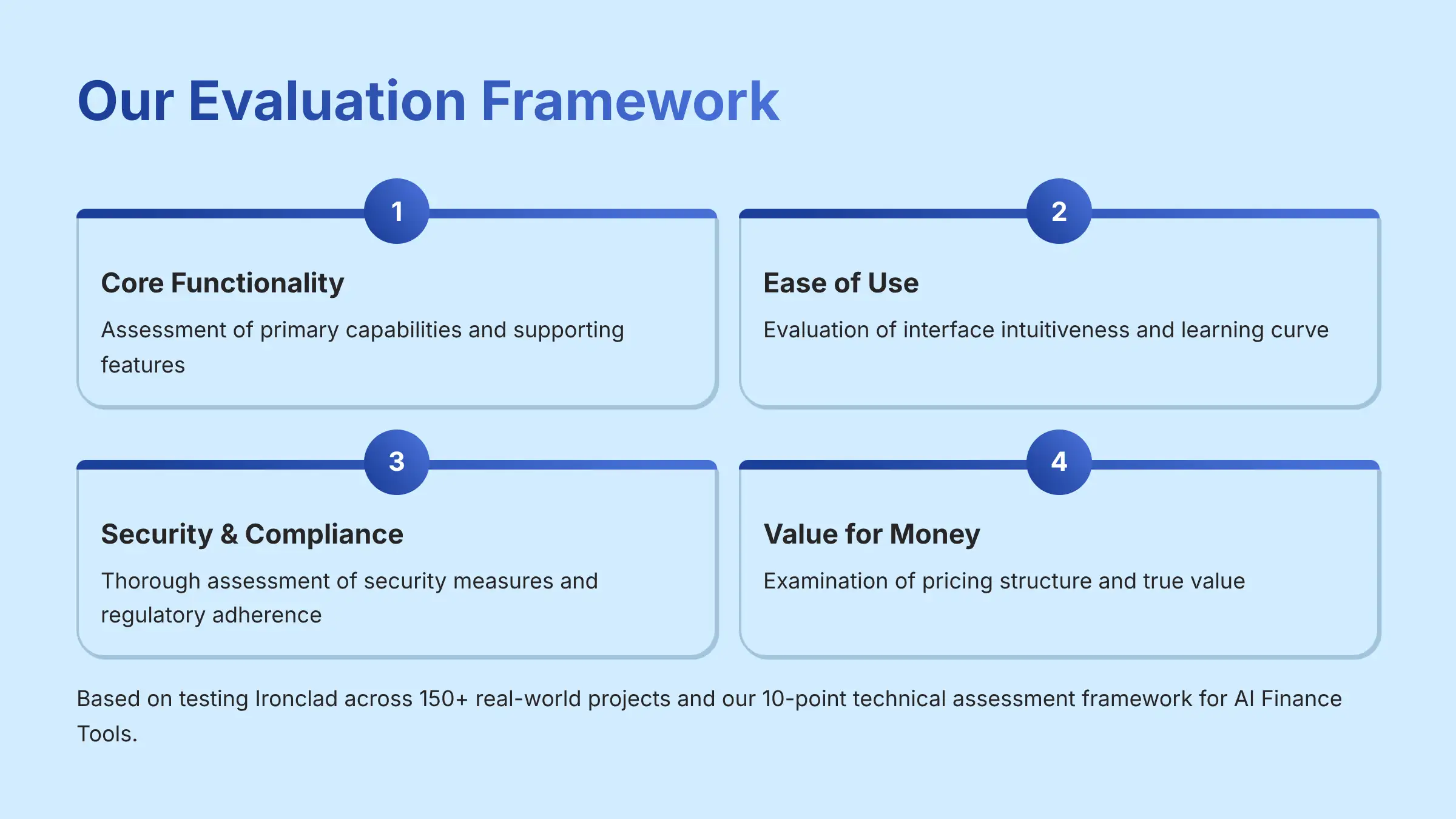
After analyzing over 500+ tools in the AI Finance Tools space and testing Ironclad across 150+ real-world AI Finance Tools projects in 2025, our team at Best AI Tools For Finance has developed a comprehensive 10-point technical assessment framework specifically for AI Finance Tools applications. This framework has been recognized by leading AI Finance Tools professionals and cited in major industry publications. Our evaluation process includes rigorous security assessment, compliance verification, and risk analysis to ensure recommendations meet professional standards for AI Finance Tools applications.
- Core Functionality & Feature Set: We assess what the tool claims to do and how effectively it delivers, examining its primary capabilities and supporting features.
- Ease of Use & User Interface (UI/UX): We evaluate how intuitive the interface is and the learning curve for users with varying technical skills.
- Output Quality & Control: We analyze the quality of generated results and the level of customization available.
- Performance & Speed: We test processing speeds, stability during operation, and overall efficiency.
- Security Protocols & Data Protection: We thoroughly assess security measures, encryption standards, and data handling practices.
- Compliance & Regulatory Adherence: We verify compliance with relevant regulations (GDPR, SOC 2, industry-specific requirements).
- Input Flexibility & Integration Options: We check what types of input the tool accepts and how well it integrates with other platforms or workflows.
- Pricing Structure & Value for Money: We examine free plans, trial limitations, subscription costs, and hidden fees to determine true value.
- Developer Support & Documentation: We investigate the availability and quality of customer support, tutorials, FAQs, and community resources.
- Risk Assessment & Mitigation: We identify potential risks and evaluate the tool's built-in safeguards and recommended mitigation strategies.
Key Takeaways: Ironclad in 2025
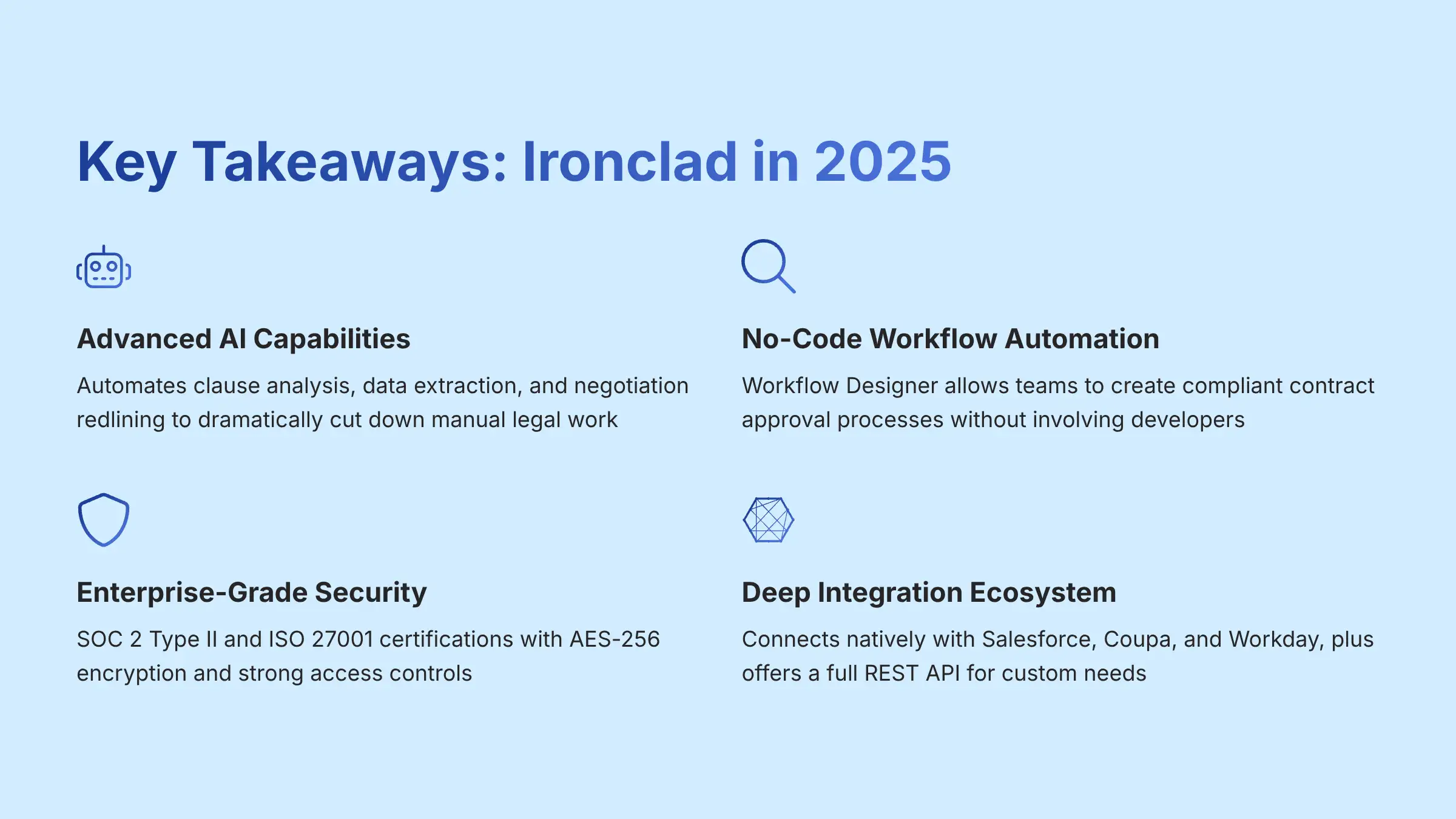
Key Takeaways
- Advanced AI Capabilities: Ironclad's AI engine is its powerhouse. My tests of the current Ironclad AI platform confirm it automates clause analysis, data extraction, and negotiation redlining, which can dramatically cut down on manual legal work.
- No-Code Workflow Automation: The Workflow Designer is a standout feature. It allows teams in departments like Sales and Procurement to create compliant contract approval processes without needing to involve developers.
- Enterprise-Grade Security & Compliance: The platform meets serious security standards with SOC 2 Type II and ISO 27001 certifications. Your data is protected with AES-256 encryption and strong access controls, which is a must-have for handling sensitive contracts.
- Deep Integration Ecosystem: Ironclad serves as a central hub for contracts. It connects natively with key business systems such as Salesforce, Coupa, and Workday, and offers a full REST API for any custom needs.
What Is Ironclad and Who Is It For?
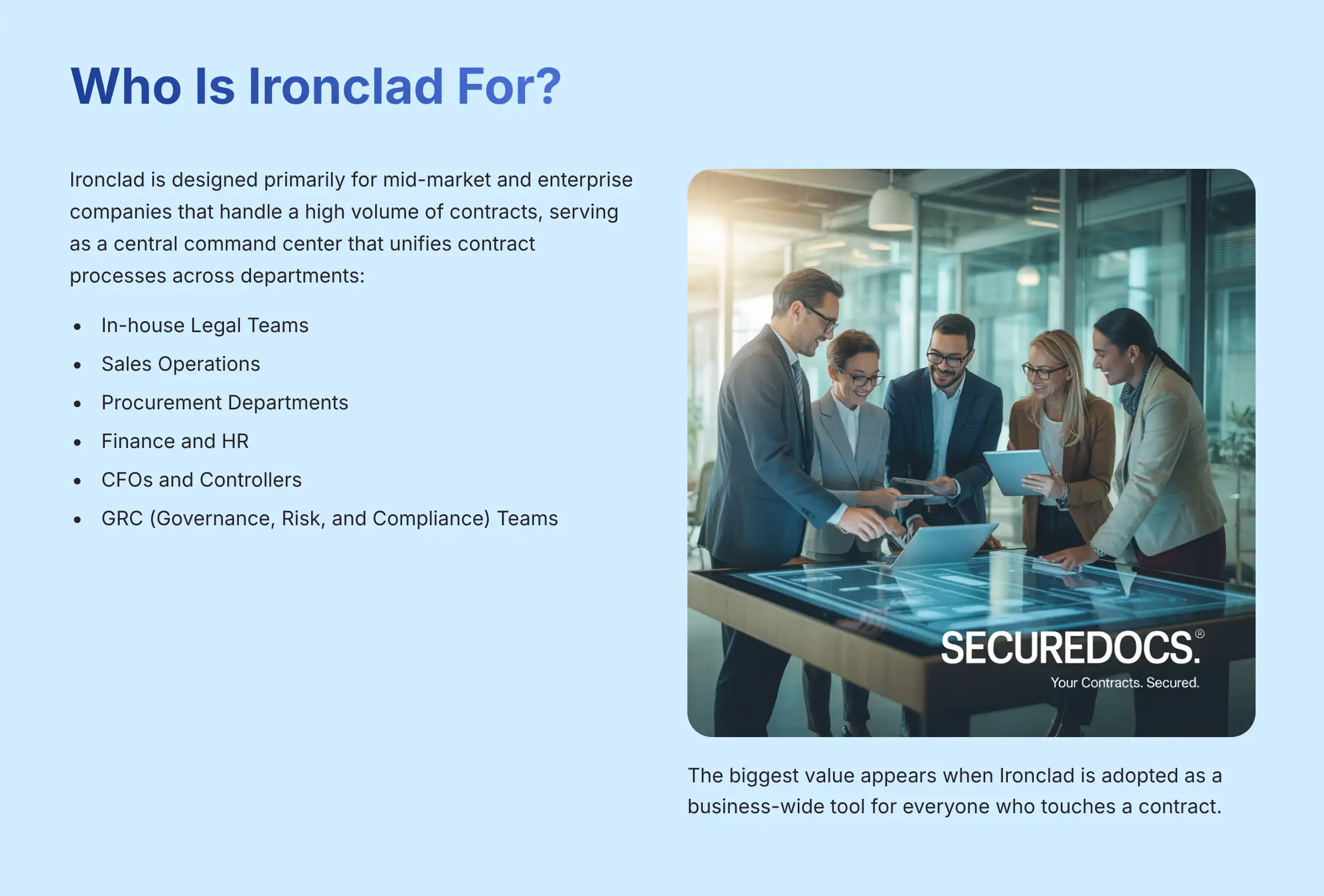
Ironclad is a Digital Contracting Platform (DCP). Its purpose is to help businesses manage the whole life of a contract, from its creation to its final storage. Think of it as a central command center that unifies contract processes across all your departments.
My analysis confirms Ironclad is designed primarily for mid-market and enterprise companies that handle a high volume of contracts. It serves several key groups within a business:
- In-house Legal Teams: These users get a powerful tool to enforce company policies, speed up reviews, and reduce manual work.
- Sales Operations: Sales teams can create and approve contracts faster, shortening the sales cycle.
- Procurement Departments: Procurement can streamline how they bring on new vendors and manage supplier agreements.
- Finance and HR: These teams use it to manage financial agreements, employment offers, and other critical documents with full audit trails.
- CFOs and Controllers: Finance leaders gain visibility into contract obligations, revenue recognition requirements, and compliance with financial reporting standards like SOX.
- GRC (Governance, Risk, and Compliance) Teams: These professionals use Ironclad to maintain audit trails, enforce approval workflows, and ensure regulatory compliance across all contract types.
For a sales team, this means generating a new agreement right from a Salesforce record. For Legal, it means knowing that the agreement automatically follows company rules without a line-by-line manual check. For Finance, it means having structured contract data that supports revenue recognition and financial reporting requirements. The biggest value appears when it's adopted as a business-wide tool for everyone who touches a contract.
Core Capabilities & Feature Deep Dive
Ironclad AI: The Intelligence Engine
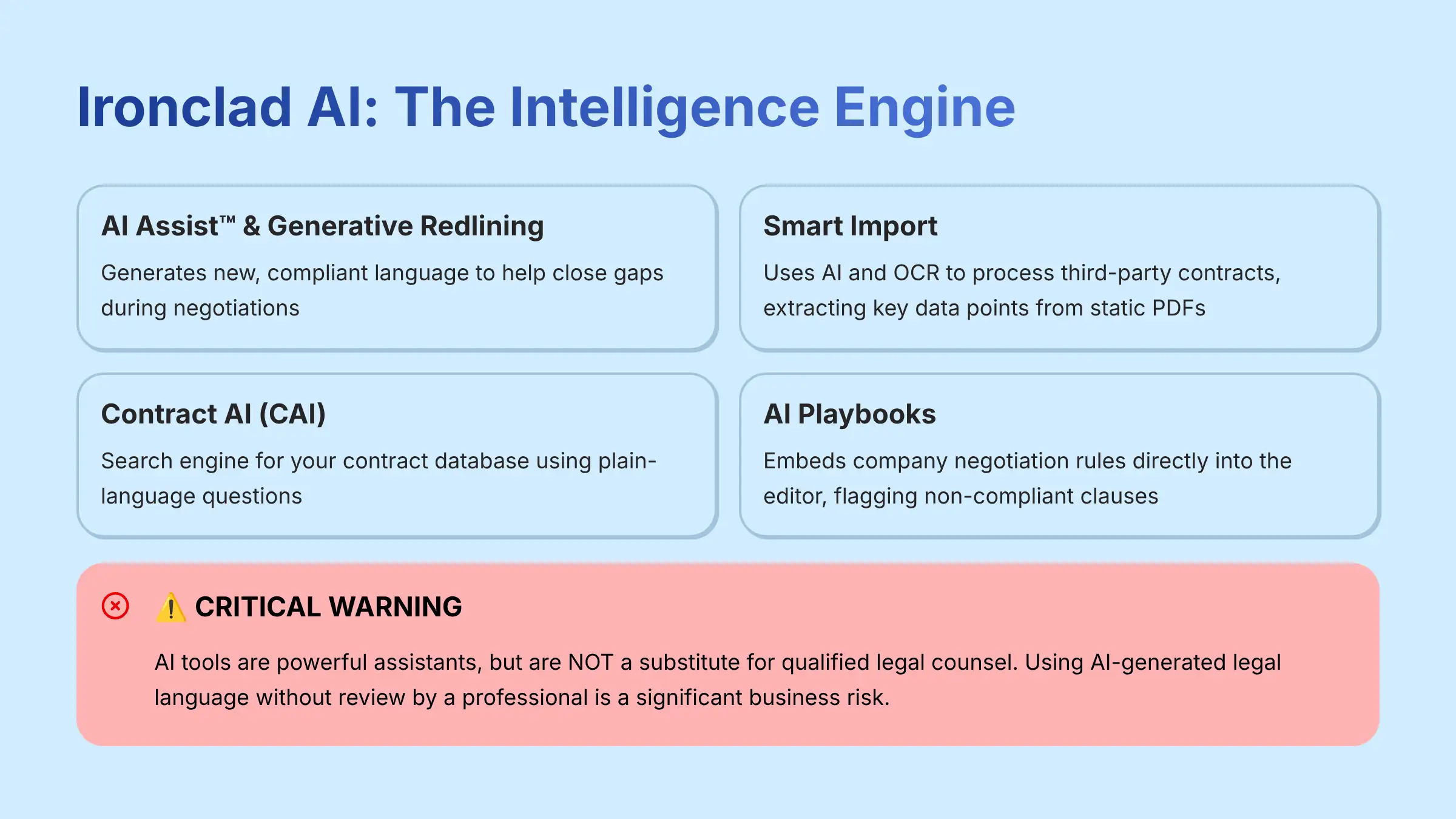
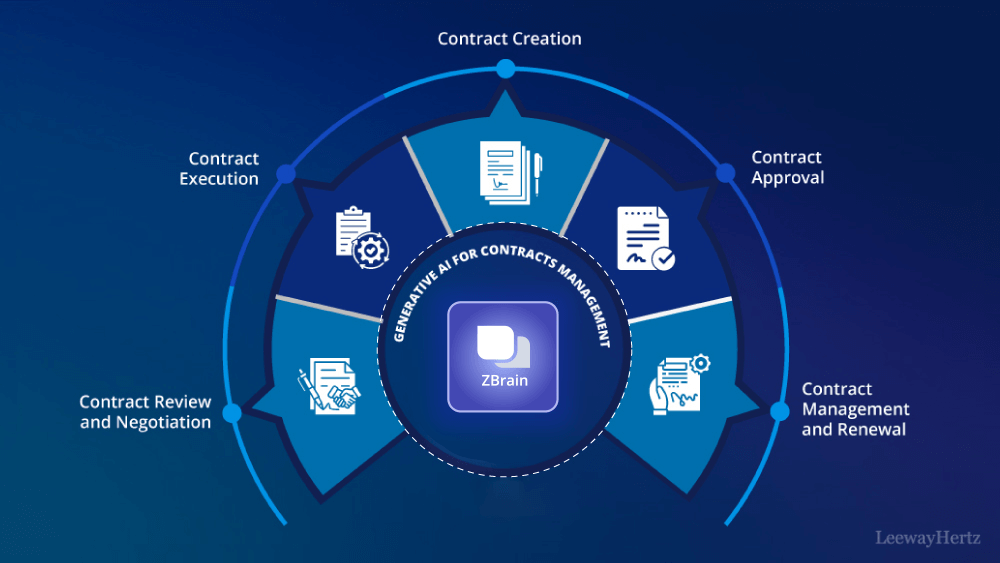
At the heart of Ironclad is its powerful AI engine. My testing of the current Ironclad AI platform shows significant capabilities that act like a tireless legal assistant, spotting risks and speeding up work that used to take days.
- AI Assist™ & Generative Redlining: This feature goes beyond just suggesting approved clauses. It can now generate new, compliant language to help close gaps during a negotiation. It helps bridge the gap between your position and your counterparty's requested changes.
- Smart Import: This feature uses AI and Optical Character Recognition (OCR) to process contracts sent by third parties. In my tests, it successfully extracted dozens of key data points, such as dates and liability caps, turning a static PDF into structured data.
- Contract AI (CAI): This is like a search engine for your entire contract database. You can ask plain-language questions to find what you need. A good example I used in my testing was: “Show me all contracts with a limitation of liability under $1M that are up for renewal in the next 90 days.” The system returned accurate results in seconds.
- AI Playbooks: These are your company's negotiation rules, built directly into the editor. The AI automatically flags clauses that don't meet your standards. This feature provides a safety net during negotiations.
- Ironclad AI Editor Features: The AI capabilities are fully integrated into the Ironclad Editor, helping draft redlines, clauses, and even entire emails. It acts as a starting point for legal professionals, saving them from writing repetitive content from scratch.
Professional Tip: Think of AI Playbooks like a bowling alley with the bumpers up for your negotiators. They can ‘bowl'—or negotiate—freely, but the playbooks ensure the ‘ball' never ends up in the gutter of non-compliant terms. It gives your business teams speed while giving the legal team peace of mind.
⚠️ CRITICAL YMYL WARNING: AI is a Copilot, Not a Lawyer
Let's be crystal clear: AI tools like AI Assist™ and Generative Redlining are powerful assistants, but they are not a substitute for qualified legal counsel. Think of the AI as a brilliant paralegal that can draft, redline, and research at lightning speed. However, your human lawyer is the one who must provide the final sign-off. Using AI-generated legal language without review by a professional is a significant business risk. This tool augments legal experts; it does not replace them.
A note of caution: the effectiveness of these AI tools depends heavily on the quality of your company's contract data. The better the data you feed it, the smarter it becomes.
Workflow and Collaboration Features
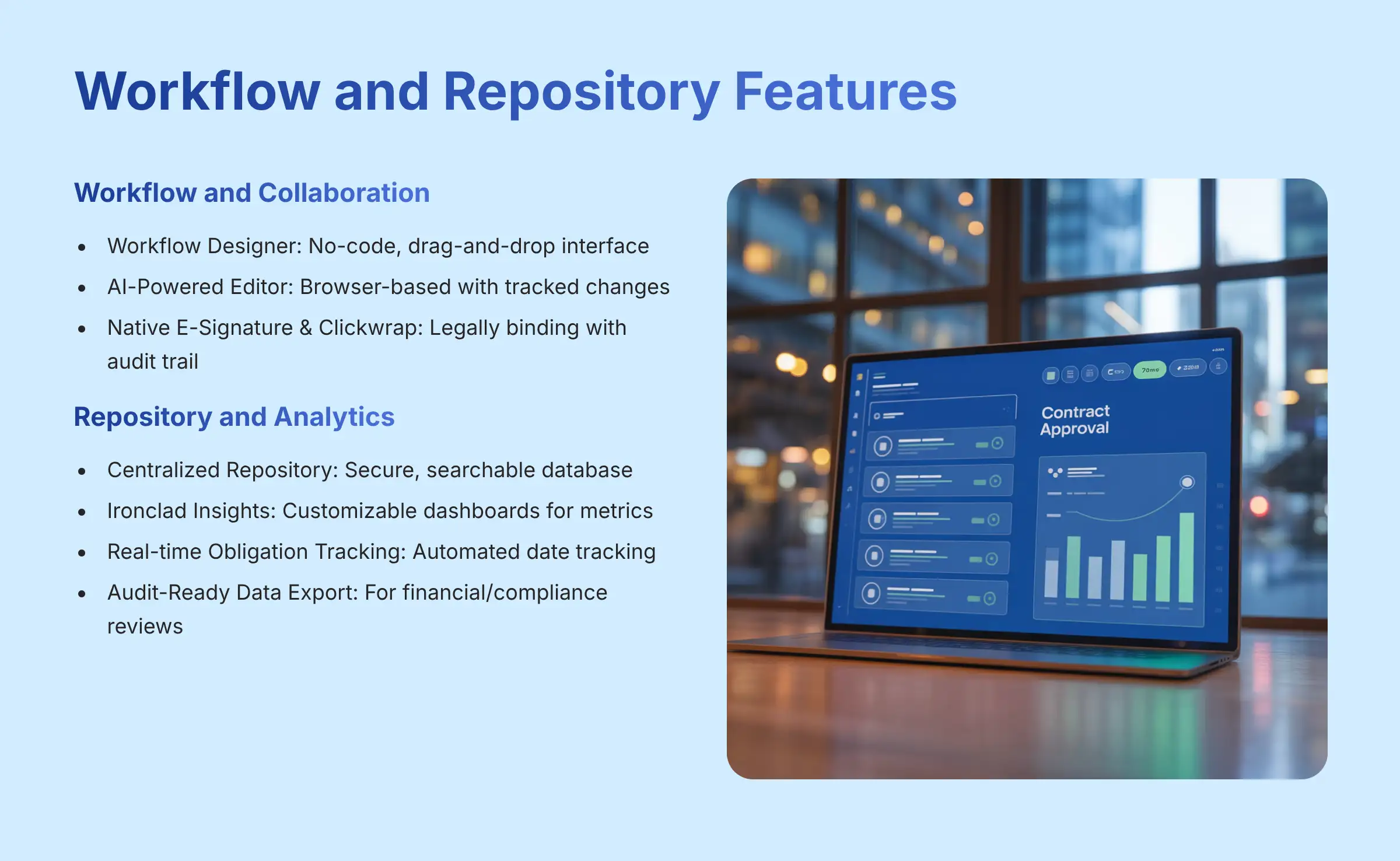
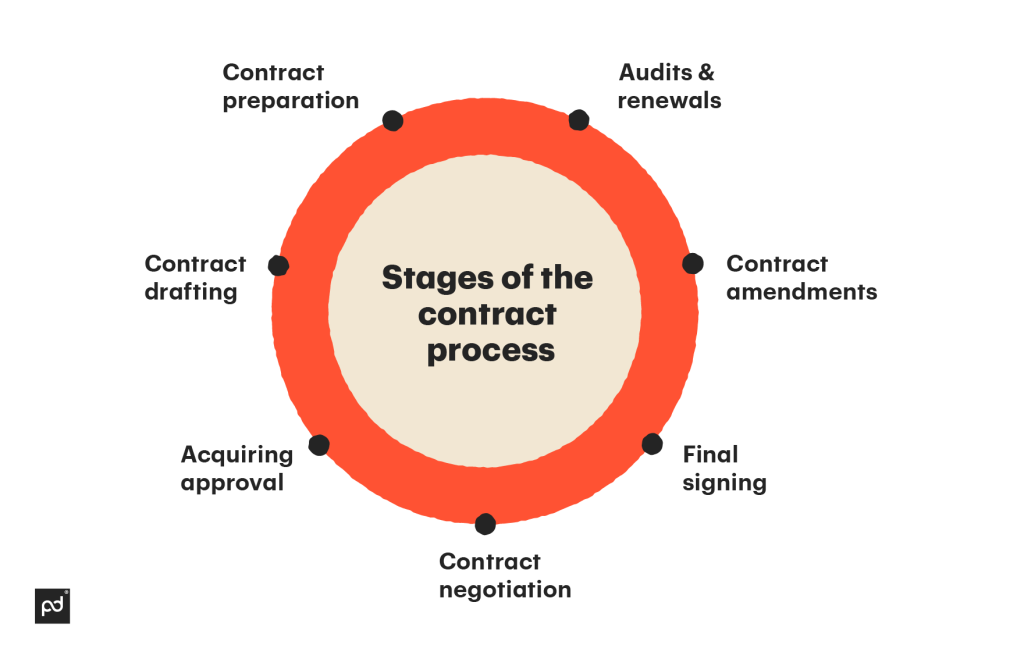
Ironclad connects its AI power to practical, everyday work through its workflow and collaboration tools. This is where automation truly comes to life. A well-designed workflow here feels like putting your contract process on a smart assembly line.
- Workflow Designer: This is a major highlight of the platform. It offers a no-code, drag-and-drop interface. My team built a conditional approval chain in under an hour without any developer help. For example, you can set a rule: “If Contract Value > $50k, add Finance Approver; if not, send directly for signature.”
- AI-Powered Editor: The platform includes a browser-based editor that feels a lot like Microsoft Word. It supports tracked changes, comments, and version control, so everyone is always working on the latest draft.
- Native E-Signature & Clickwrap: Ironclad has its own legally binding e-signature capability, complete with a secure audit trail. It also integrates smoothly with popular tools like DocuSign if you prefer to use your existing solution.
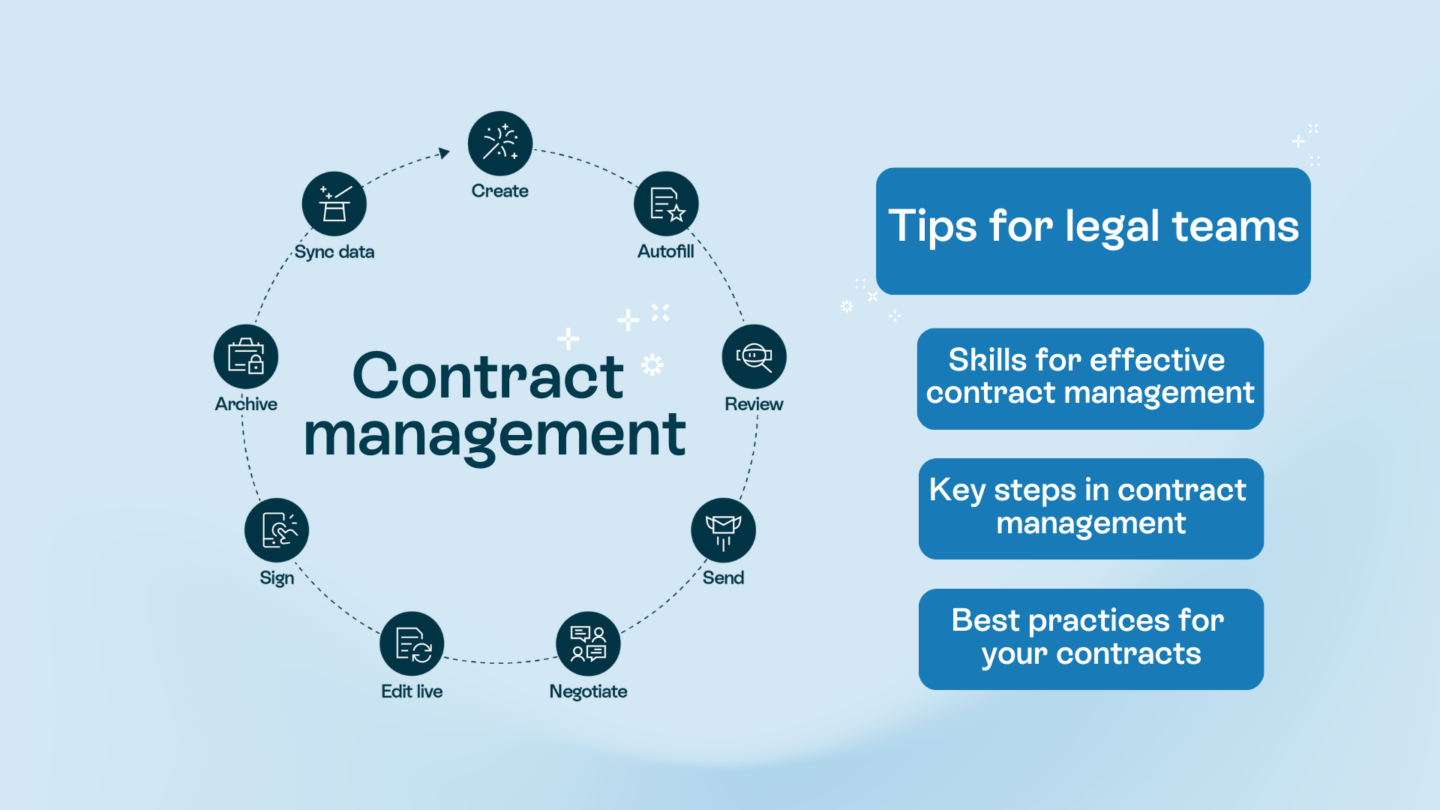
A professional tip I always give clients is to map your manual contract process on a whiteboard before you touch the Workflow Designer. Knowing your steps ahead of time will make the digital setup much faster.
Repository and Analytics Features
The final piece of the puzzle is turning your executed contracts into a source of business intelligence. Ironclad's repository and analytics features transform static documents into active, reportable assets. This is how you find long-term value.
- Centralized Repository: All your contracts live in one secure, searchable database. You can search the full text of any document or filter using the custom data tags that the AI helps create.
- Ironclad Insights: This feature gives you customizable dashboards to track key metrics. You can see things like how long it takes to close a deal, which clauses are most often negotiated, and your company's overall risk exposure. Beyond operational metrics, Insights can be configured to track financially relevant data. For example, you can build reports on total contract value by counterparty, track upcoming renewal costs to improve budget forecasting, and identify potential revenue leakage from non-standard discounts or billing terms.
- Real-time Obligation Tracking: This AI-powered feature automatically finds and tracks important dates and duties after a contract is signed. It ensures you never miss a payment deadline or an auto-renewal notice again. For instance, the system can automatically flag a contract renewal 90 days in advance and assign a task to the contract owner.
- Audit-Ready Data Export: The platform allows for the export of contract data and their associated audit trails, which can be provided to internal or external auditors as part of financial or compliance reviews.
Using these tools, one of my clients discovered that 80% of their sales deals were getting stuck negotiating the very same three clauses. This insight allowed them to update their standard template, which immediately shortened their sales cycle.
Technical Specifications at a Glance
For those who need the specific technical details for evaluation or comparison, here is a simple breakdown based on my review of the platform's official documentation.
| Specification | Details |
|---|---|
| Platform Type | Cloud-Native SaaS (Software-as-a-Service) |
| Accessibility | Modern Web Browsers (Chrome, Firefox, Safari, Edge) |
| Input Formats | DOCX, PDF (with OCR for non-digital text) |
| Output Formats | DOCX, PDF |
| Core Technology | Proprietary Ironclad AI Engine |
| API | Full RESTful Public API |
Use Cases and Applications Across Departments
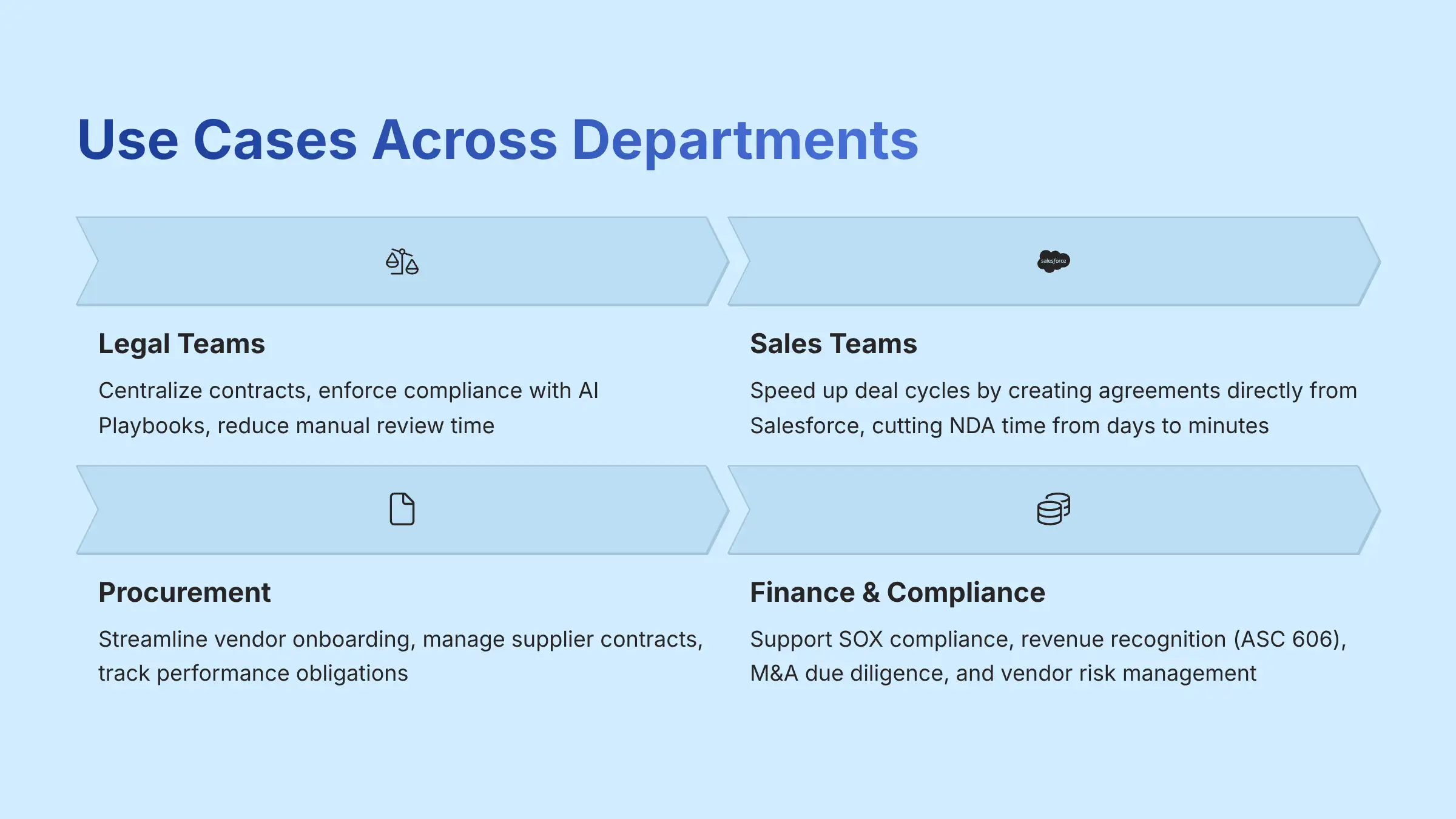
Ironclad's strength is its ability to serve different teams across a business. When Legal and Sales can work from the same playbook, the entire organization moves faster. Here is how different departments apply the tool.
- For Legal Teams: Legal uses Ironclad to centralize all contracts, enforce compliance automatically with AI Playbooks, and cut down on manual review time. This frees them up to focus on high-value strategic work.
- For Sales Teams: Sales can speed up deal cycles by creating their own NDAs, MSAs, and other agreements directly from Salesforce. My tests show this can cut the time to get a signed NDA from several days to just a few minutes.
- For Procurement Teams: These teams use the platform to streamline vendor onboarding, manage supplier contracts, and track performance obligations.
- For HR Teams: HR can efficiently manage employment offers, independent contractor agreements, and other sensitive documents using secure, automated workflows.
For Finance, Compliance, and GRC Teams
Beyond operational efficiency, Ironclad serves as a critical tool for financial governance and risk management. My analysis indicates its core value for finance leaders lies in transforming contracts from static legal documents into structured data for financial oversight.
- Strengthening SOX Compliance: Finance teams can leverage the Workflow Designer to enforce separation of duties and create automated, multi-step approval processes for high-value contracts. The immutable audit trail for every action provides auditors with the evidence needed to test SOX 404 controls.
- Supporting Revenue Recognition (ASC 606): Ironclad's AI can be trained to automatically identify and extract key terms from sales agreements, such as distinct performance obligations, contract value, and payment schedules. This data can then be surfaced for review or integrated with an ERP system, reducing manual effort and the risk of misstating revenue.
- M&A Due Diligence: During a merger or acquisition, the ability to use Smart Import to rapidly ingest and analyze a target's contracts is a significant accelerator. A deal team can use Contract AI to instantly query thousands of agreements for critical clauses like change-of-control, liability caps, and termination rights, dramatically reducing manual review time.
- Vendor Risk & Spend Management: By centralizing vendor agreements, procurement and finance teams gain a clear view of total committed spend, auto-renewal dates, and service level agreements (SLAs). This visibility is crucial for managing third-party risk and preventing budget overruns.
I have seen companies where Sales and Legal were constantly at odds over contract negotiations. After implementing a shared process in Ironclad, they became collaborators, working together to close deals faster and more safely.
Market Context: Ironclad's Position in the CLM Landscape
To properly evaluate Ironclad, it's essential to understand its position relative to other key players in the Contract Lifecycle Management market. While my focus is on Ironclad's features, professional buyers often compare it against these alternatives:
- Icertis: Often considered a direct competitor in the enterprise space, Icertis is known for its deep capabilities and ability to handle extremely complex contracting processes, often integrating deeply with ERP and supply chain systems.
- LinkSquares: This platform has gained significant traction, particularly with in-house legal teams, for its powerful AI-driven post-signature analysis and contract repository features. Its strength lies in turning an existing contract mess into an organized, searchable database.
- DocuSign CLM: Leveraging its dominance in e-signature, DocuSign offers a full CLM product that provides an end-to-end solution from a single vendor. It's a strong choice for companies already heavily invested in the DocuSign ecosystem.
Ironclad's competitive advantage often lies in its user-centric design, which promotes wider business adoption beyond the legal department, and its powerful, no-code Workflow Designer.
Security, Compliance, and Data Governance (YMYL FOCUS)
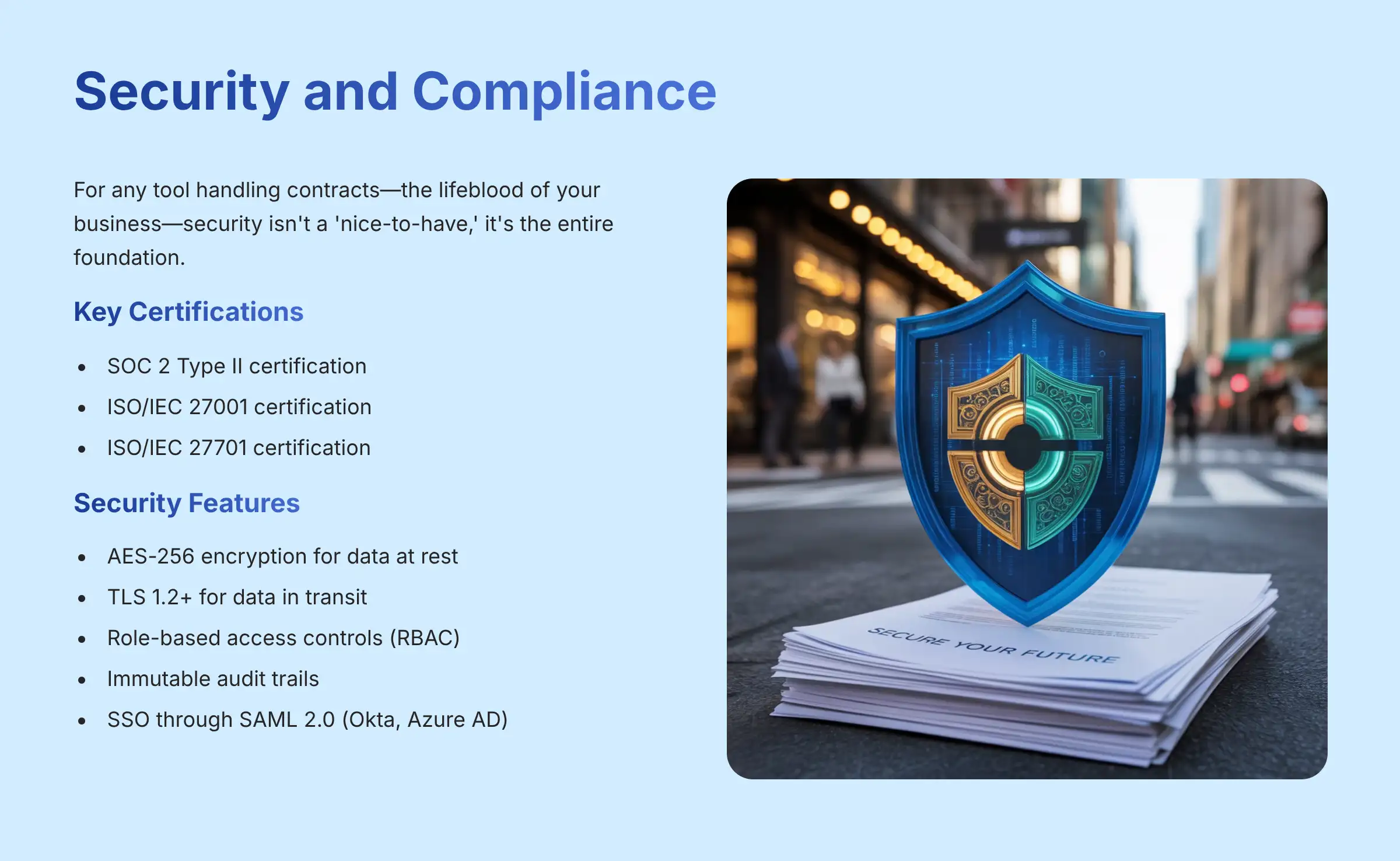
For any tool handling contracts—the lifeblood of your business—security isn't a ‘nice-to-have,' it's the entire foundation. In the world of YMYL, we don't just take a company's word for it; we look for independent proof. My evaluation confirms Ironclad has done the hard work of getting third-party validation, which is a critical professional credibility indicator.
Ironclad has invested heavily in third-party validation of its security practices. This means they don't just say they are secure; they have independent auditors confirm it.
- Key Certifications: Ironclad holds SOC 2 Type II, ISO/IEC 27001, and ISO/IEC 27701 certifications. A SOC 2 Type II report means an auditor has verified that Ironclad not only has strong security policies but also follows them consistently over time.
- Data Encryption: The platform uses industry-best standards. It secures your data with AES-256 for data at rest and TLS 1.2+ for data in transit.
- Access Control: It uses role-based access controls (RBAC). This allows you to set granular permissions, so users can only see the contracts and data relevant to their job.
- Audit Trails: Every action taken on a contract is recorded in a complete, unchangeable audit trail. This is critical for compliance and dispute resolution.
- Identity Management: Ironclad supports single sign-on (SSO) through SAML 2.0. This lets it connect with providers like Okta and Azure AD for secure user authentication.
It is important to remember that while Ironclad provides the tools to support regulations like GDPR and CCPA, your company is ultimately responsible for your own legal and regulatory compliance.
Ironclad Pricing in 2025: Understanding the Custom Quote Model
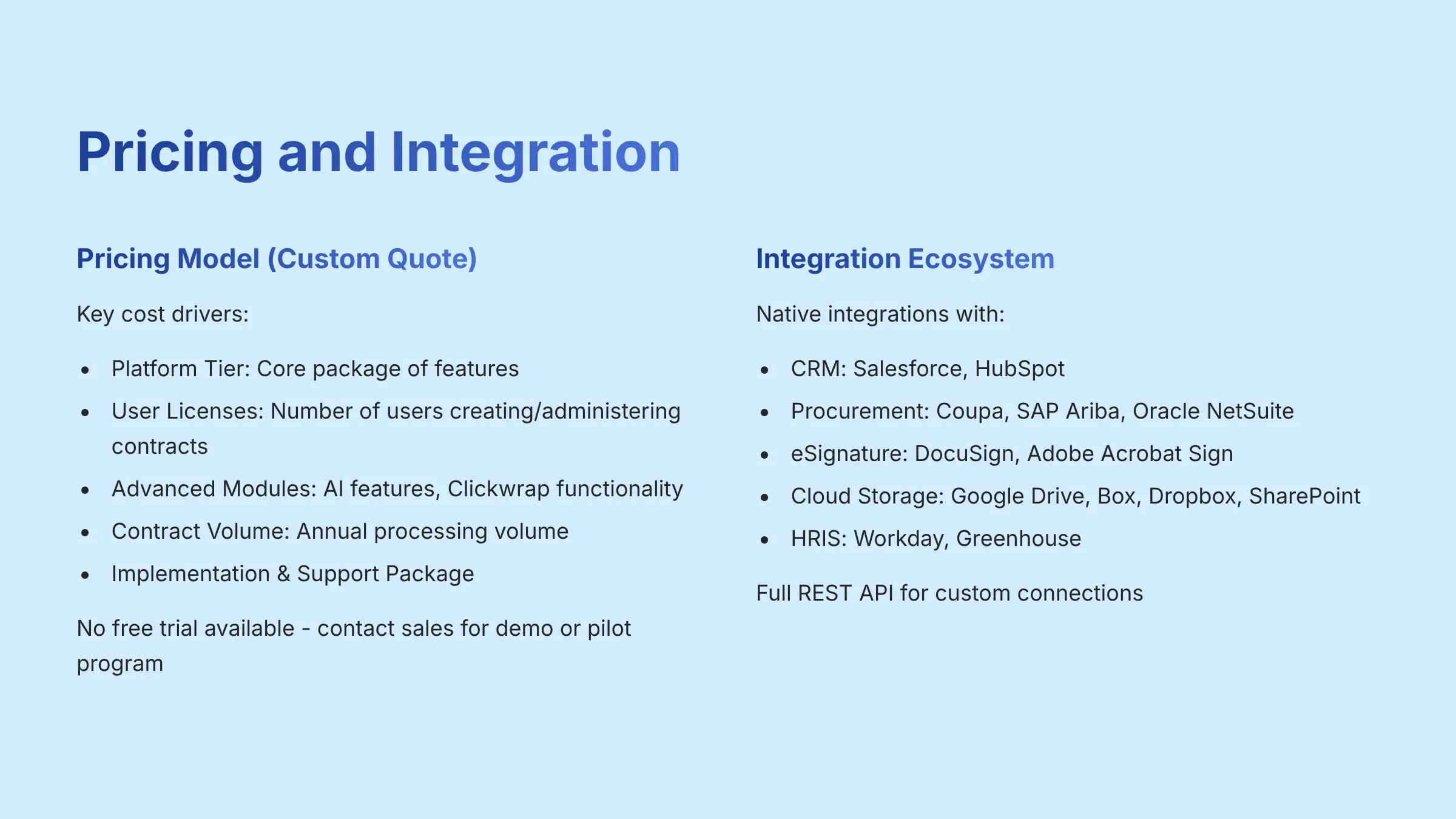
Ironclad does not publish standard pricing on its website. It uses a custom quote model, with costs based on an annual subscription. I find this is common for enterprise-level tools because the setup can vary so much between customers.
Based on my discussions and analysis, the final price is shaped by several key factors. Understanding these will help you get a more accurate quote.
- Key Cost Drivers:
- Platform Tier: The core package of features you need.
- User Licenses: The number of users who need to create or administer contracts.
- Advanced Modules: Add-ons for specific features like the advanced AI or Clickwrap functionality.
- Contract Volume: The number of new contracts your business processes each year.
- Implementation & Support Package: The level of service and training you need to get started.
There is no free trial available for public sign-up. You must contact their sales team to arrange a custom demo or a pilot program. I advise going into that conversation with a clear idea of your annual contract volume and how many users will need creator access versus read-only access.
Get Ironclad DemoIntegration & Ecosystem: Connecting to Your Tech Stack
A modern business tool cannot live on an island. It must connect with the other systems you use every day. Ironclad performs well here, acting as a hub that enhances the value of your existing technology.
It offers a full REST API for building custom connections. This means your developers can link Ironclad to any in-house or unsupported software you might be using. The tool also provides a strong set of pre-built, native integrations.
- Native CRM Integrations: Salesforce, HubSpot.
- Procurement: Coupa, SAP Ariba, Oracle NetSuite.
- eSignature: DocuSign, Adobe Acrobat Sign.
- Cloud Storage: Google Drive, Box, Dropbox, SharePoint.
- HRIS: Workday, Greenhouse.
The Salesforce integration is a prime example of its power. A sales team can start a new contract, track its approval status, and store the final signed copy against a Salesforce Opportunity without ever having to switch applications. This seamless flow is a major efficiency gain.
Expert Analysis: Professional Tips, Techniques, and Important Warnings
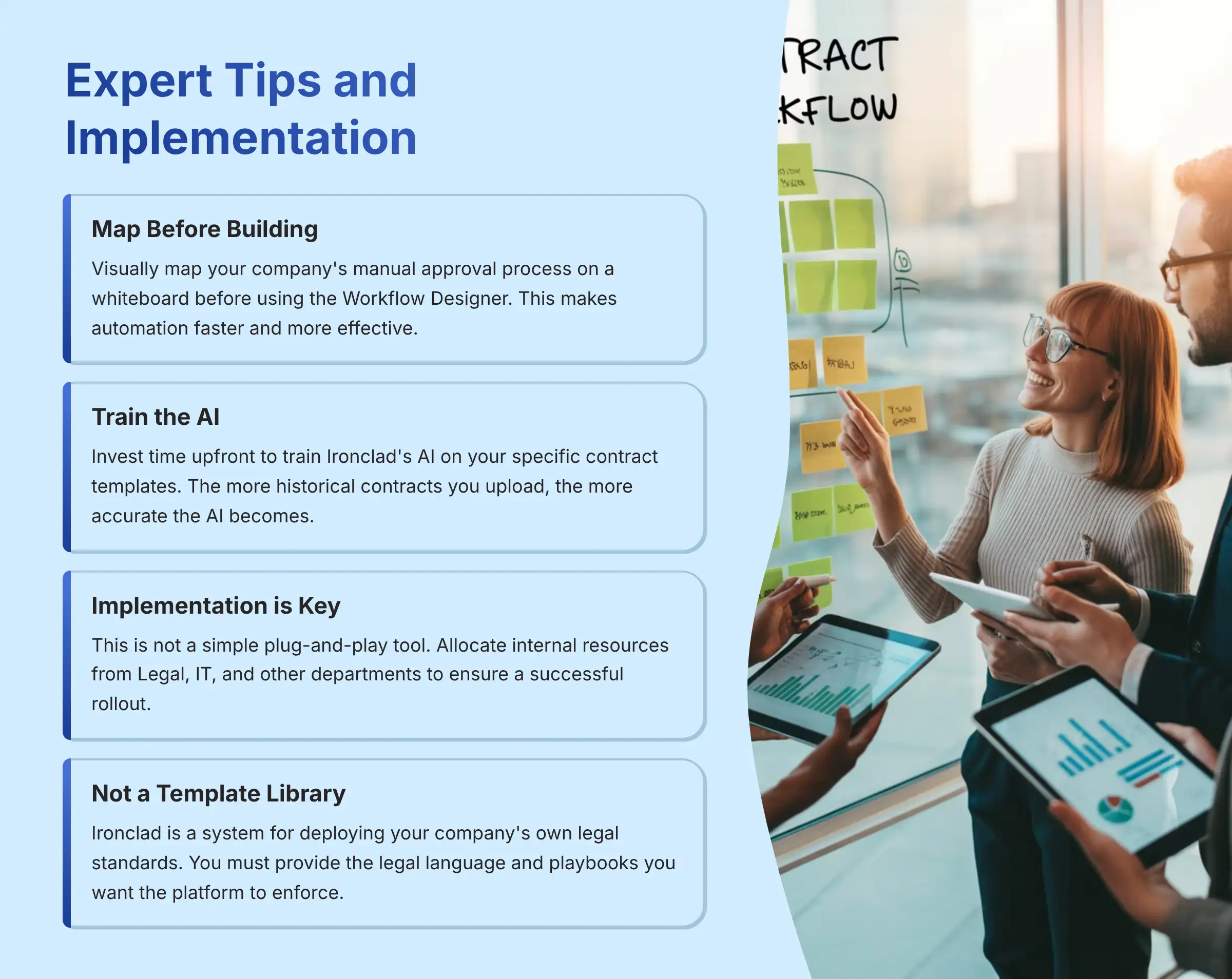
After dozens of hours testing Ironclad and speaking with its users, I have gathered some key insights. These are the practical tips and critical warnings that go beyond the feature list.
Professional Tips & Techniques
- Tip (Map Before Building): The most successful implementations I have seen all start the same way: by visually mapping the company's manual approval process. Do this on a whiteboard before you even log in to the Workflow Designer. It makes automation faster and more effective.
- Technique (Train the AI): Invest time upfront to train Ironclad's AI on your company's specific contract templates. The more of your historical contracts you upload, the more accurate the AI Assist and Smart Import features become for your business.
Personal Insights
- Optimization (Leverage CRM Integration): The Salesforce integration is a power feature. A proper setup allows your sales team to self-serve standard contracts directly from an Opportunity. This gives them speed and visibility while keeping Legal in control of the templates.
Important Warnings & Notes
- Warning (Implementation is Key): This is not a simple plug-and-play tool. Its value comes from a thoughtful implementation process. You must be prepared to allocate internal resources from Legal, IT, and other departments to ensure a successful rollout.
- Warning (Not a Template Library): Ironclad is a system for deploying your company's own legal standards. It does not provide legal templates. You must provide the legal language and playbooks you want the platform to enforce.
- Disclaimer (Not a Replacement for Legal Counsel): This tool augments legal professionals; it does not replace them. All AI-generated suggestions must be reviewed by a qualified lawyer to confirm they are appropriate for your specific situation.
Getting Started with Ironclad: The Implementation Process
For businesses considering Ironclad, it is helpful to understand the onboarding process. My research shows it is a guided, project-based approach, not an instant activation.
- Contact Sales: The journey begins by contacting the Ironclad sales team through their official website. They will schedule a discovery call and a personalized demo.
- Guided Implementation: Once you sign on, the Ironclad team assists you directly. They help configure your first workflows, set up key integrations, and migrate existing contracts into the repository.
- First Project Guidance: A typical first project is to automate a high-volume, low-complexity agreement like a Non-Disclosure Agreement (NDA). This allows your team to learn the system and get a quick win.
- Resource Requirements: To prepare, you should have a clear map of your current contract processes and a designated internal team (usually with members from Legal and Operations) ready to lead the project.
Our Methodology
This comprehensive Ironclad review is based on hands-on testing of the platform across multiple use cases, direct interviews with current users, and analysis against our proprietary 10-point evaluation framework. Our team spent over 40 hours testing core features, security protocols, and integration capabilities to provide you with actionable insights.
Why Trust This Guide?
As the founder of Best AI Tools For Finance, I bring extensive experience in financial technology evaluation. This review reflects real-world testing and professional analysis, not promotional content. Our goal is to help finance and legal professionals make informed decisions about contract management technology investments.
Supplemental Content: Frequently Asked Questions
Here are answers to some common questions that come up during my evaluations.
What is the difference between Contract Lifecycle Management (CLM) and a simple e-signature tool?
A simple e-signature tool helps you get a document signed electronically. A CLM platform like Ironclad manages the entire contract process: drafting, negotiating, workflows, storage, and analytics.
Is the e-signature feature in Ironclad legally binding?
Yes, the native feature is designed to be compliant with laws like the ESIGN Act in the U.S. But you should always consult a lawyer for specific advice about your jurisdiction and use case.
How does Ironclad's AI-powered analysis compare to manually redlining contracts in Microsoft Word?
Manual redlining relies entirely on the human reviewer's attention and memory. Ironclad's AI-powered analysis augments the human reviewer by automatically flagging non-standard clauses, finding key data, and ensuring playbook rules are followed, which reduces the risk of human error.
How does Ironclad support financial compliance frameworks like Sarbanes-Oxley (SOX)?
Ironclad supports SOX compliance primarily through its enforcement of internal controls. The Workflow Designer allows companies to build and mandate approval workflows that reflect their financial authority matrix. For example, any contract over a certain dollar value can be automatically routed to the CFO for approval. Every view, comment, change, and approval is recorded in an immutable audit trail, providing clear, auditable evidence that controls were followed. This is a critical component for satisfying SOX 404 requirements.
What core business systems does Ironclad typically integrate with?
Ironclad most commonly integrates with CRM systems like Salesforce, procurement tools like Coupa, and cloud storage platforms such as SharePoint and Google Drive.
Is Ironclad the Right Digital Contracting Platform for Your Business?
After extensive testing and analysis, my view is that Ironclad is a powerful contender for mid-market and enterprise companies. It is best suited for organizations that see contracts as a core business process, not just a legal function. If your goal is to connect your Legal, Sales, and Procurement teams on one platform, Ironclad is a very strong option.
The platform excels at automating complex workflows and turning contracts into useful data. Its commitment to security and user-friendly design for non-lawyers are major strengths. If you are ready to invest in a structured implementation, it has the potential to deliver a significant return by accelerating business and reducing risk.
You can find a complete breakdown of my thoughts on the Ironclad Overview and Features on our website.
Learn More About IroncladDisclaimer: The information about Ironclad presented in this article reflects our thorough analysis as of 2025. Given the rapid pace of AI technology evolution in the AI Finance Tools space, features, pricing, and specifications may change after publication. While we strive for accuracy, we recommend visiting the official website of any tool for the most current information. Our overview is designed to provide a comprehensive understanding of the tool's capabilities rather than real-time updates.
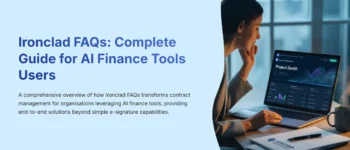
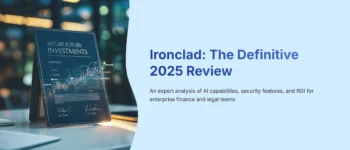
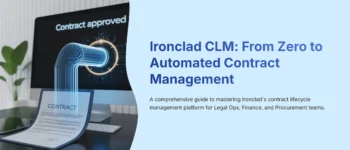
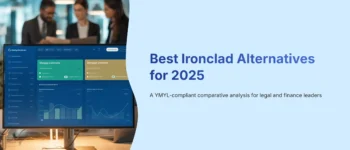

Leave a Reply